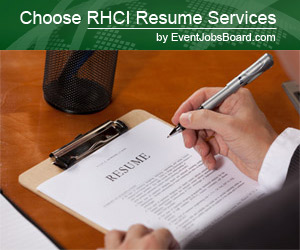
Tony Wagner, vice president of meetings and events, Carlson Wagonlit Travel North America. Courtesy of CWT.
We know that there’s more scrutiny on the planning and execution – and business rationale – behind corporate and association meetings, business travel and events now more than ever. The good news is that some of the challenges faced during the economic crisis seem to have passed. But the question is: What can event planners do moving forward to ensure the success of their programs as they handle their duties under this new spotlight?
Measurement always makes the difference. Large companies have adopted strategies of strategic meetings management (SMM) for several years now, and that approach does not have to be limited to the large annual conference or the most publicly visible 20-city road shows.
SMM addresses the important realities of budget expectations, return on investment measurement, and a critical focus on choosing the right venue, which are more important than ever, according to FutureWatch 2011 from MPI. 25% of those surveyed as part of the study indicated that demonstrating ROI from meetings, events and incentives in detail is a top priority.
“Companies of all sizes often lack a clear vision of their total meetings and events spend when M&E activities are carried out by different departments and business units that may not track data,” says Tony Wagner, vice president of meetings and events at CWT North America. He offers the following tips that small and mid-sized organizations may adopt today:
- Analyze spend and set up the right M&E organization.
Even a rough estimate of meetings & events (M&E) spend, however, can convince top executives to explore opportunities for increased return on investment. To lay the foundations for effective M&E management, small and mid-sized companies should first estimate annual M&E spend and implement processes to capture and track comprehensive data associated with their meeting planning.Companies should also centralize M&E management and involve procurement experts in the decision-making process. Regardless of their size, organizations should also consider whether and how much to outsource their M&E activities to best accomplish their goals. Some organizations with only a modest number of annual meetings may find it beneficial to handle some or all aspects in house. Conversely, many small and mid-sized companies have limited resources and may need to outsource to third party resources.
- Design an M&E strategy and policy.Companies should draw up a strategy based on their different categories of meetings and business events that defines strategic objectives, helps manage to preferred suppliers, and outlines other processes and policies, including approvals. M&E policies should also set precise rules for organizers of meetings and events. Although all the relevant stakeholders across an organization should be consulted to obtain input and buy-in, it is important to designate ownership of the policy to facilitate day-to-day management and promote compliance.
- Create an annual M&E budget and events calendar.Organizations should budget and plan meetings and events annually to make the best use of their resources. If comprehensive data is lacking, companies should begin by estimating the value of their largest events and then continue working down to incorporate medium and small events, which actually represent 2/3 of spend in most organizations. Tracking these events in a centralized calendar can improve managers’ visibility of M&E activity, as well as provide benefits such as alerting organizers to the availability of canceled meeting space that could be reused.
- Select and negotiate with suppliers.Working effectively with the right suppliers enables SME companies to leverage outside expertise while reducing costs. Some organizations use outsourced M&E assistance for their largest events only, while others outsource the management of all events, large and small. That decision depends on each organization’s unique M&E requirements, their corporate culture related to outsourcing, etc. Beyond M&E suppliers specifically, meeting planners should also work with their corporate travel departments to consider opportunities to leverage that volume for better M&E pricing with shared suppliers, such as with airlines and hoteliers.
- Establish a formal event planning process.A formal planning process is key to a consistent meetings and events program, maximizing compliance and ensuring that M&E meet business objectives as well as satisfy attendees. CWT recommends five key steps any company should take: define objectives, establish a formal approval process, plan sufficiently in advance, choose a convenient destination and outsource coordination where necessary to leverage skills.
- Implement efficient attendee registration.Attendee management can be more efficient and convenient when manual processes are replaced by technology, regardless of an organization’s number of meetings or meeting attendees. Many companies use online registration tools that streamline processes for both M&E planners and attendees. In addition, organizations are increasingly using SMM tools to support M&E processes, sourcing and spend management.
- Handle payment and reimbursement.An optimized payment and reconciliation process enables organizations to effectively manage data and maximize compliance with the M&E program. As procurement experts become increasingly involved in M&E at organizations of all sizes, more companies will adopt the relevant best practices. These include paying as many supplier costs as possible through a single mode of payment — preferably a corporate meeting card — and asking attendees to use their corporate credit cards for reimbursable expenses.
- Evaluate M&E performance and policy compliance.Any organization with an established M&E program should consistently follow up to check that their program is meeting objectives and driving ongoing improvements. In addition to monitoring attendee satisfaction, companies should track the satisfaction of other stakeholders, supplier performance, and the value brought by M&E in terms of both tangible and intangible benefits. Aggregate reporting and analysis of spend data across an entire organization provides benchmarking information that helps identify new savings opportunities and process improvements.
May not be reproduced.














